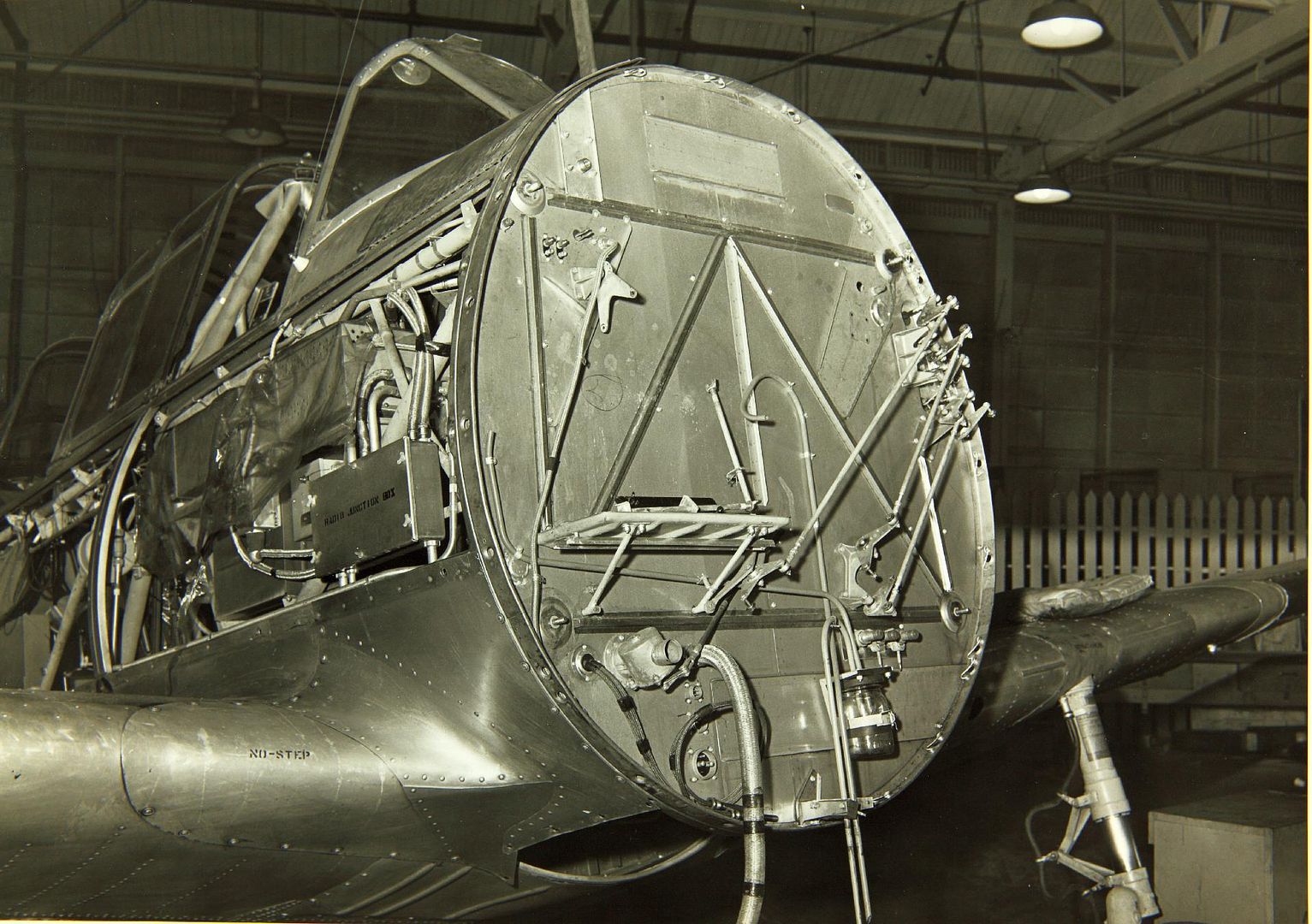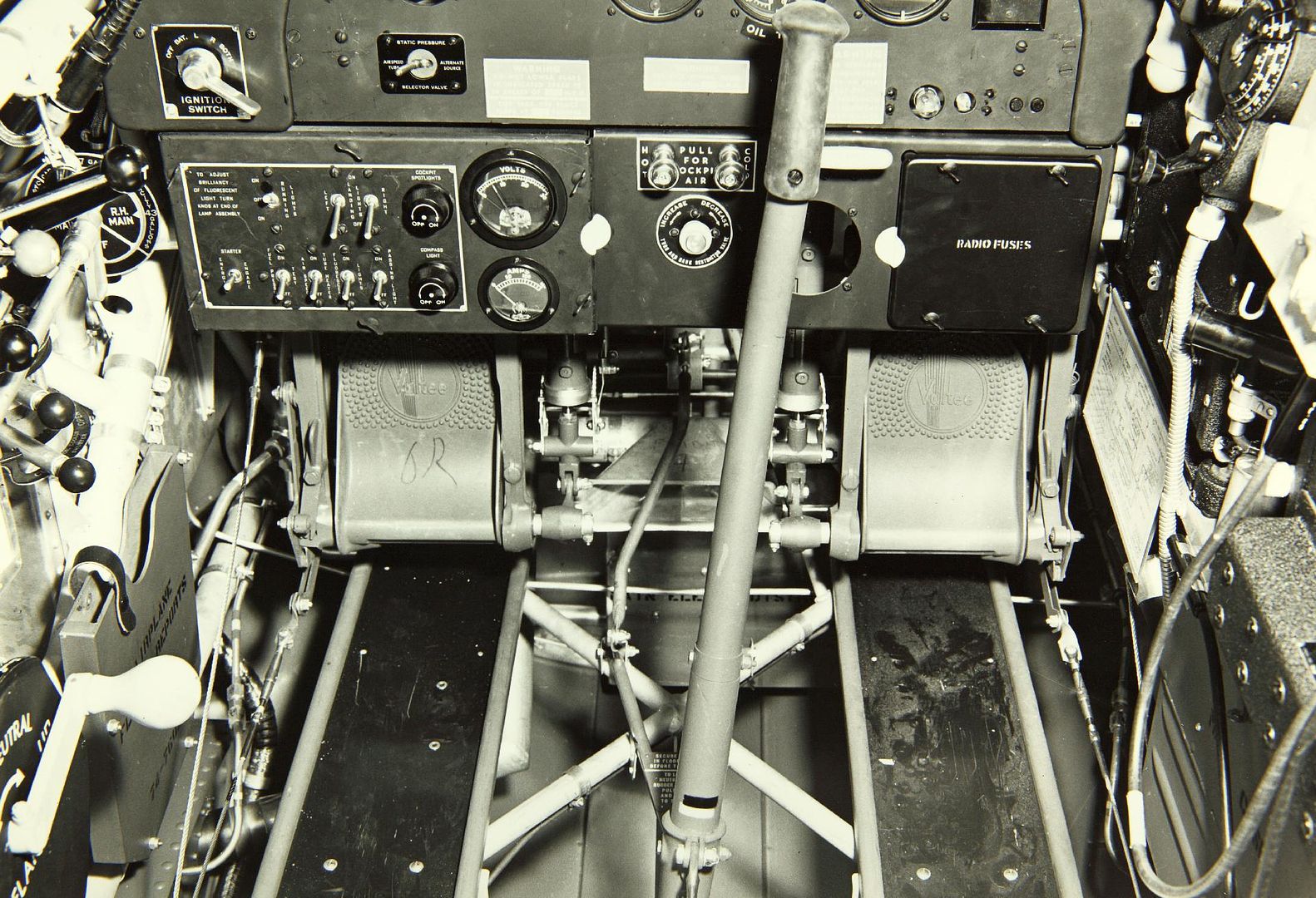Forums
- Forums
- Duggy's Reference Hangar
- USAAF / USN Library
- Vultee BT-13 Valiant
Vultee BT-13 Valiant
Post a reply
- Go to Previous topic
- Go to Next topic
- Go to Welcome
- Go to Introduce Yourself
- Go to General Discussion
- Go to Screenshots, Images and Videos
- Go to Off topic
- Go to Works in Progress
- Go to Skinning Tips / Tutorials
- Go to Skin Requests
- Go to IJAAF Library
- Go to Luftwaffe Library
- Go to RAF Library
- Go to USAAF / USN Library
- Go to Misc Library
- Go to The Ops Room
- Go to Made in Germany
- Go to Campaigns and Missions
- Go to Works in Progress
- Go to Juri's Air-Raid Shelter
- Go to Campaigns and Missions
- Go to Works in Progress
- Go to Skinpacks
- Go to External Projects Discussion
- Go to Books & Resources
-
6 years agoSun Apr 21 2024, 09:23amDuggy
 Main AdminThe Vultee BT-13 Valiant was an American World War II-era basic (a category between primary and advanced) trainer aircraft built by Vultee Aircraft for the United States Army Air Corps, and later US Army Air Forces. A subsequent variant of the BT-13 in USAAC/USAAF service was known as the BT-15 Valiant, while an identical version for the US Navy was known as the SNV and was used to train naval aviators for the US Navy and its sister services, the US Marine Corps and US Coast Guard.
Main AdminThe Vultee BT-13 Valiant was an American World War II-era basic (a category between primary and advanced) trainer aircraft built by Vultee Aircraft for the United States Army Air Corps, and later US Army Air Forces. A subsequent variant of the BT-13 in USAAC/USAAF service was known as the BT-15 Valiant, while an identical version for the US Navy was known as the SNV and was used to train naval aviators for the US Navy and its sister services, the US Marine Corps and US Coast Guard.
Design and development
The Vultee BT-13 was the basic trainer flown by most American pilots during World War II. It was the second phase of the three phase training program for pilots. After primary training in PT-13, PT-17, or PT-19 trainers, the student pilot moved to the more complex Vultee for continued flight training. The BT-13 had a more powerful engine and was faster and heavier than the primary trainer. It required the student pilot to use two way radio communications with the ground and to operate landing flaps and a two-position Hamilton Standard controllable-pitch propeller. It did not, however, have retractable landing gear nor a hydraulic system. The flaps were operated by a crank-and-cable system. Its pilots nicknamed it the "Vultee Vibrator."
Due to the demand for this aircraft, and others which used the same Pratt & Whitney engine, some were equipped with Wright powerplants of similar size and power built in 1941?42. The Wright-equipped aircraft were designated BT-15.
The Navy adopted the P&W powered aircraft as their main basic trainer, designating it the SNV. The BT-13 production run outnumbered all other Basic Trainer (BT) types produced.
In 1938, Vultee chief designer Richard Palmer began designing a single-engine fighter aircraft. About that time, the Army Air Corps issued a solicitation for an advanced trainer, with the promise of a substantial order if selected. Palmer adapted his design concept from a fighter to an advanced trainer, resulting in the V-51 prototype.
Vultee BC-3 prototype in flight
The prototype flew on 24 March 1939 as a cantilever low-wing monoplane of all-metal construction, with fabric-covered control surfaces. It was powered by a Pratt & Whitney R-1340-S3H1-G Wasp radial engine of 600 hp (450 kW), driving a two-blade variable-pitch metal propeller. It had an enclosed cockpit for the instructor and student, integral wing fuel tanks, and a hydraulic system to operate the flaps and retractable main landing gear.
The V-51 was entered into the USAAC competition as the BC-51 in May 1939. The USAAC instead chose the North American BC-2 in the competition, but also purchased the BC-51 prototype for further study, designating it the BC-3. Palmer refined his design, resulting in the VF-54, with the goal of selling the trainer to other countries. It used the same basic airframe as the VF-51, but was fitted with a lower powered engine. However, no export sales resulted from this proposal.
The V-54 was further refined, resulting in the VF-54A, with a well-faired fixed landing gear, manually-operated landing flaps, powered by a Pratt & Whitney R-985-T3B Wasp Jr. radial rated at 450 hp (340 kW). It was offered to the USAAC in this form, and in August 1939 the type was ordered as the BT-13. The initial order was for 300 aircraft with a Pratt & Whitney R-985-25 radial. The first aircraft was delivered to the USAAC in June 1940.
The BT-13A was produced to the extent of 7,037 aircraft and differed only in the substitution of a Pratt & Whitney R-985-AN-1 radial engine, and deletion of the landing gear fairings. 1,125 units designated BT-13B were then produced; they differed from the A model in replacing the 12v electrical system with a 24v system.
Due an industry-wide demand for the Pratt & Whitney R-985 engine, a total of 1,263 units were then produced incorporating the Wright R-975-11 engine of equal power rating. They were accepted by the USAAC as BT-15.
The US Navy also ordered 1,150 BT-13A models under the designation SNV-1. It also ordered another 650 units designated SNV-2, based on the BT-13B.
Once in service, the aircraft quickly got its nickname of "Vibrator." There are several explanations given for this nickname. 1: Because it had a tendency to shake quite violently as it approached its stall speed. 2. During more adventurous maneuvers the canopy vibrated. 3. On takeoff, the aircraft caused windows on the ground to vibrate. 4. The two-position propeller had an irritating vibration in high pitch. The BT-13 served its intended purpose well. It and its successors were unforgiving aircraft to fly, but were also extremely agile. Thus the BT-13 made a good aircraft to help transition many hundreds of pilots toward their advanced trainers and fighters yet to be mastered. The BT-13 was not without its faults. The tail was held on with only three bolts and after several in-flight failures, the Navy restricted the aircraft from aerobatic and violent maneuvers. The Navy declared the SNV obsolete in May 1945 and replaced it in the basic training role with the SNJ (T-6). The Army also replaced the BT-13 with the AT-6 before the end of the war.
After World War II, virtually all were sold as surplus for a few hundred dollars each. Many were purchased just to obtain their engines, which were mounted on surplus biplanes (such as Stearmans) to replace their less powerful engines for use as cropdusters. The BT airframes were then scrapped. Several others were modified as multi-passenger civilian aircraft; one as the "Viceroy" and at least two others by a different firm. Today, some "BT's" (collectively, BT-13s, BT-15s and SNVs) are still flying, though in very limited numbers (and none in military or government service).
Below BC-3 Vultee Model V.51(prototype) with retractable landing gear and a 600hp P&W R-1340-45, one built, not developed.

Below BT-13/BT-13A etc (right click for details)

















































Variants
BT-13
Vultee Model V.54 with fixed undercarriage and a 450hp P&W R-985-25 engine, 300 built.
BT-13A
As BT-13 but fitted with a 450hp R-985-AN-1 engine and minor changes, 6407 built, survivors re-designated T-13A in 1948.
BT-13B
As BT-13A but with a 24-volt electrical system, 1125 built.
BT-15
As BT-13A with a 450hp Wright R-975-11 engine, 1693 built.
XBT-16
One BT-13A was re-built in 1942 by Vidal with an all-plastic fuselage as the XBT-16.
SNV-1
BT-13As for the United States Navy, 1350 transferred from United States Army Air Corps.
SNV-2
BT-13Bs for the United States Navy, 650 transferred from United States Army Air Corps.
T-13A
Surviving BT-13As were re-designated in 1948, due to dual allocation of T-13 with the PT-13 in practice they were still known as the BT-13 to avoid confusion.
Specifications (BT-13A)
General characteristics
Crew: 2
Length: 28 ft 10 in (8.79 m)
Wingspan: 42 ft 0 in (12.80 m)
Height: 11 ft 6 in (3.51 m)
Wing area: 239 sq ft (22.2 m2)
Empty weight: 3,375 lb (1,531 kg)
Gross weight: 4,496 lb (2,039 kg)
Powerplant: 1 ? Pratt & Whitney R-985-AN-1 nine-cylinder air-cooled radial engine, 450 hp (340 kW)
Propellers: 2-bladed Hamilton-Standard 2-position
Performance
Maximum speed: 180 mph (290 km/h; 156 kn)
Range: 725 mi (630 nmi; 1,167 km)
Service ceiling: 21,650 ft (6,600 m)
Time to altitude: 9.2 minutes to 10,000 ft (3,000 m)
Post a reply
- Go to Previous topic
- Go to Next topic
- Go to Welcome
- Go to Introduce Yourself
- Go to General Discussion
- Go to Screenshots, Images and Videos
- Go to Off topic
- Go to Works in Progress
- Go to Skinning Tips / Tutorials
- Go to Skin Requests
- Go to IJAAF Library
- Go to Luftwaffe Library
- Go to RAF Library
- Go to USAAF / USN Library
- Go to Misc Library
- Go to The Ops Room
- Go to Made in Germany
- Go to Campaigns and Missions
- Go to Works in Progress
- Go to Juri's Air-Raid Shelter
- Go to Campaigns and Missions
- Go to Works in Progress
- Go to Skinpacks
- Go to External Projects Discussion
- Go to Books & Resources
